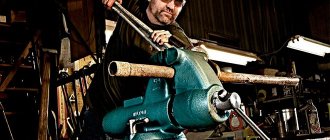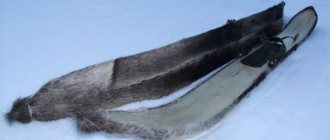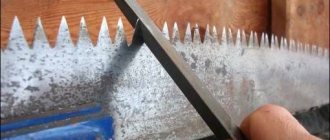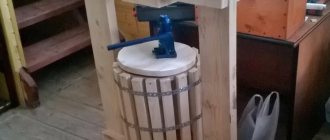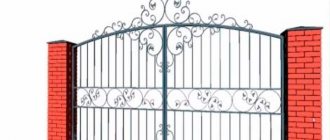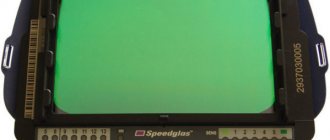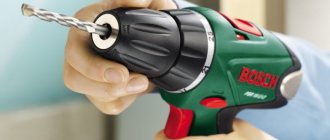Raising livestock requires quite a lot of feed, such as hay and a variety of grasses. However, to grow, mow and harvest them yourself, you will also need a variety of devices, which together can cost quite a pretty penny. The solution may be to independently manufacture certain equipment, for which improvised materials and even what previously might have seemed like garbage are often suitable.
Application of tedder rakes
After mowing, you should prepare the grass for turning it into hay. This means that it is necessary to form windrows, turn over from time to time, and collect into bales or rolls. Factory or homemade tedder rakes collect the mown grass into windrows and, if necessary, turn them over to dry. To use hay harvesting equipment, walk-behind tractors, mini tractors, tractors and even horses are used. This is much more efficient than working with hand tools. You can perform the following operations:
- raking of mown plant matter;
- tedding the grass;
- windrow wrapping and spreading;
- doubling of arranged rows of rolls.
Do-it-yourself rakes for mini tractors have a number of advantages. The device is more efficient than hand tools, is easily transported to the storage area and takes up little space. Affordable price and no problems purchasing spare parts.
All tedders can be divided into several types. For example, rakes differ in the rotation of the working elements when forming transverse and lateral rolls. They are also divided according to the type of working mechanisms:
- wheel-finger, allowing you to make rolls of the required size. This type can only work with dry plant mass and this is perhaps the only drawback. Thanks to the thoughtful design of the rake, tedders of this type are characterized by good performance and are considered the most practical;
- drum or rotary, characterized by structural strength and independent arrangement of raking wheels. They are considered the most expensive models on the agricultural equipment market, but this is justified by their functionality. This type of equipment can not only turn over the mown plant mass, but also form neat windrows from it;
- tooth tedders. Thanks to the design, it is possible to change the angles of inclination of the working elements.
Depending on the type of traction, the equipment can be either tractor or horse. The second type can be used together with a walk-behind tractor. Installation of factory or homemade rakes is possible in three ways:
- trailed (installed on tractors);
- semi-mounted rakes (the most affordable);
- mounted tedders (aggregated with walk-behind tractors and mini tractors).
Rotary tedders are considered the most expensive, so many people prefer to do it themselves, especially since there are no problems with spare parts. They can be purchased in specialized stores or removed from old equipment. Making your own rake is not that difficult; all you need is the desire and experience in handling a plumbing tool.
Description
This turner attachment is designed to perform two tasks:
- tedding hay;
- raking it to one side.
The working part of this type of tractor-mounted equipment (Russian, Finnish, Polish or Turkish) in most cases consists of four or five wheels. They all rotate in the same direction in a plane that is perpendicular to the direction of movement of the mini tractor.
In this case, the outermost wheel is slightly ahead of the others, the second is slightly behind, the third is even further, then the fourth and fifth. They all rotate in the same direction.
Each wheel has many metal rods around its perimeter, which are slightly curved at the edge in the shape of a hook.
Tedder rake
In raking mode, work occurs as follows.
The wheels, according to the instructions, rotate in such a way that the very first wheel, located on the right (if you face the direction of movement), picks up the hay scattered on the surface of the ground with metal rods and throws it to the side so that it falls under the second wheel.
There are several options for working:
- You can make one pass, then in the opposite direction, so that all the hay ends up in one row, where it will be much easier to collect.
- You can make three passes in one direction, gradually moving the collected hay in one direction. In this case, you will have to collect three times as much hay from one row.
There are other possible operating schemes that can be followed on the tedder rake in this mode.
In the tedding mode, the tractor driver rotates the frame with impellers 180 degrees. In this case, the rightmost wheel will be located at the rear. The hay he picks up will not fall on other wheels. The same can be said about each of the wheels.
Tedder rake at work
Varieties for mini tractors
There are many options for homemade and factory rakes for tractors. The classification is based on characteristics such as the type of working mechanism, method of attachment to the machine, etc.
By type of working mechanisms:
| Name | Characteristic |
| Wheel-finger | They are characterized by high productivity and can make windrows of the required size. |
| Rotary | Durable and multifunctional. In addition to creating windrows, they are used for turning hay. |
| Dental | Can change the angle of inclination. |
By type of traction:
- tractor;
- horse ones, can also be attached to a walk-behind tractor.
According to the installation method, devices are divided into:
- mounted;
- trailed;
- semi-mounted.
However, the main criterion is the design. According to this principle, rakes are divided:
- rotary;
- wheel-mounted;
- tape
Types of harrows for mini tractors
There are several classifications of harrows. Let's focus on the most important ones.
According to the depth of processing, they are distinguished:
- heavy harrows – cultivate the soil quite efficiently. Penetrate to a depth of 10 cm, break up large clods of earth;
- medium - cultivate the soil to a depth of 8 cm;
- light – used for planting seeds and leveling the surface layer of soil. Capable of penetrating the soil to a depth of 6 cm.
Based on the design of the working elements, harrows are divided into:
- tooth harrows are the oldest and most common type of harrow. It is made in the form of a grid of thin metal plates, to which various teeth (straight, curved) are welded. A special modernized version of this type of harrow are spring harrows for mini tractors;
- disc harrows for mini tractors are universal, can be used on any type of soil, including the presence of foreign particles, coarse plant stems and stones. They consist of a certain number of curved discs with notches, located at an angle;
- combined (chain defenses) - consist of knives, teeth and levelers (chains or metal rods). Well suited for soil treatment before sowing.
Depending on the type of coupling there are:
- active – harrows that are attached to the PTO and operate independently, without additional attachments;
- combined - which work together with other attachments (for example, seeders).
Drawings and assembly instructions
Assembling the device with your own hands is a doable task even without special knowledge.
Mounted wheeled
We are talking about “sun” type rakes, which are so called because of the tedder wheels located on both sides of the mini tractor. The advantages of the design are the speed of raking and turning hay, as well as a long service life. In total, 3-5 wheels are placed on the “sun”.
For assembly you will need:
- grinder, drill, wrenches, welding and other tools;
- metal pipe (you can use a motorcycle frame);
- thick wire to form the fingers of the instrument;
- brackets;
- sheets of metal, such as steel, to make discs;
- bearings: 2 per wheel;
- spare parts for the fastening device to attach the tedders to the tractor (for example, car hubs).
According to the drawing, you need to assemble the parts into one structure, then attach the “sun” to the tractor.
Tape design
This tool is suitable for collecting and tedding freshly cut grass and hay.
A distinctive feature of tedders is the extensive coverage of the treated area with a low weight of the implement.
Since there are no wheels in the design, the rake is considered to be mounted.
Rotary rake
Farmers use them to collect and form windrows of fragile types of hay. The “fingers” gently beat and turn the crops, maintaining the quality of the grass without loss of mass.
For assembly you will need:
- metal pipes with a diameter of about 5 cm and rods - 1 cm;
- metal for frame;
- chain and gears;
- metal sheet for strengthening;
- cardan shaft
Build process:
- Preparing the frame. Its width should be suitable for the mount, and its length should be suitable for the grip radius. For example, with a span of 3.5 m, the length of the frame will be 2.5 m. The shape that works best is a crane boom, i.e. at one end it is wide, and at the other it narrows.
- Preparing the rotor. It will be driven by a cardan shaft, which is used as the rear axles of cars (since they have the necessary gears).
- Attach pipes about 40 cm long to the rotor. To do this, you need to drill holes for them at equal distances in diameter.
- Make rake “fingers” from rods, secure them to the pipes with bolts or weld them.
- Attach the rotor to the frame. In order for the design to work correctly, you need to adjust the gears for raking and tedding. The shaft must be divided in half and the parts placed on opposite sides so that the rotation speed is reduced to 80 and 20 rpm, respectively.
- Attach one part to the frame using plates with bearings.
- The second one is to be attached to the bottom with springs. Place the gears on the shaft and connect them with a chain.
To change gears, the worker will need to change the gear and chain length.
Can I do it myself?
We have already mentioned that the tedder rake does not have technically complex components and elements in its design, so if you wish, you can make such a unit with your own hands.
On the Internet you can find various diagrams and drawings of tedders designed and developed by home craftsmen. Considering that not every farmer has a tractor, we will present a basic design that is quite suitable for working with a walk-behind tractor.
Please note that a three-wheeled tedder rake is sufficient for a walk-behind tractor. If the equipment will be used with a tractor, the number of rotors can be increased to 5.
As a basis for homemade tedder rakes, a metal pipe is used, on which brackets for attaching the rotors are installed.
To ensure free rotation of the working elements, you will need two tapered bearings and a hub (for each rotor). This element can be borrowed ready-made from a VAZ car.
General recommendations
Farmers are choosing to assemble their own rakes to save money. However, it is worth considering that spending on homemade tedders will be less only if there is a sufficient amount of scrap metal, i.e. in the absence of the need to purchase consumables. As a result, structures assembled with your own hands last a long time, and their power is not inferior to factory-made devices.
The main recommendation is to decide which type of tool is most suitable for the area of land being cultivated. Since, for example, sun rakes and tedders with a belt structure will work effectively only on flat fields.
In addition, it is worth thinking about the choice of design device, because... rotary devices are one spinning wheel, which can be hazardous due to the large radius of rotation.
How to set up a plow on a mini tractor
Homemade cutter for t 40
Harrow for mini tractor
Hiller for mini tractor
The best mini tractors for snow removal with a bucket: how to make a snow blower yourself
How to make a PTO for a homemade mini tractor: diagram, instructions
This is interesting: Description of a manual seeder for carrots
Principle of operation
Thanks to the power take-off shaft or chain drive, the torque is transmitted from the main engine to the rotating mechanism of the tedder. Up to five pairs of wheels can be used at the same time, covering a large area to carry out the necessary work.
A rake of this type, thanks to the set angle of the needle wheels, can perform many different functions. By changing the direction of torque, functions can be combined.
For example, if one side of the tedder is turned clockwise and the other side is turned counterclockwise, all the straw, hay, grass or leaves will be collected in the main center track, where they can then be easily raked into a pile. If you need to use the tedder as a wide rake, then the angle of the fence changes by 180°, so that the wheels align in one row and rake everything that needs to be collected from the ground. The principle of such a device is quite simple, so it is easy to work with.
Read also: Chickpea flour: composition, properties, application and recipes
Kinds
All tedders can be divided into several types. For example, rakes differ in the rotation of the working elements when forming transverse and lateral rolls. They are also divided according to the type of working mechanisms:
- wheel-finger, allowing you to make rolls of the required size. This type can only work with dry plant mass and this is perhaps the only drawback. Thanks to the thoughtful design of the rake, tedders of this type are characterized by good performance and are considered the most practical;
- drum or rotary, characterized by structural strength and independent arrangement of raking wheels. They are considered the most expensive models on the agricultural equipment market, but this is justified by their functionality. This type of equipment can not only turn over the mown plant mass, but also form neat windrows from it;
- tooth tedders. Thanks to the design, it is possible to change the angles of inclination of the working elements.
Depending on the type of traction, the equipment can be either tractor or horse. The second type can be used together with a walk-behind tractor. Installation of factory or homemade rakes is possible in three ways:
- trailed (installed on tractors);
- semi-mounted rakes (the most affordable);
- mounted tedders (aggregated with walk-behind tractors and mini tractors).
Rotary tedders are considered the most expensive, so many people prefer to do it themselves, especially since there are no problems with spare parts. They can be purchased in specialized stores or removed from old equipment. Making your own rake is not that difficult; all you need is the desire and experience in handling a plumbing tool.
Features of a rake for a mini tractor
According to their design, rakes for mini tractors are usually classified into 2 types:
- rake-tedder for a mini-tractor of the “Solnyshko” type;
- rotary rake.
Each of the presented designs has its own characteristics and advantages. The choice of this trailed equipment also depends on the nature of the upcoming work and the topography of the hayfield. For example, the “Solnyshko” rake for a mini tractor is suitable for areas with uneven surfaces, since their height is easy to control during operation. Also among the advantages of these rakes it is worth noting high productivity (wide area coverage and high speed), ease of repair and operation. To make a rake-tedder for a mini tractor of this particular design, we recommend that you watch the video:
Rotary rakes are also good, but they are easier to use on flat areas, since they can only work at a certain height, without the ability to adjust. Among the advantages are reliability, the ability to collect hay into windrows, and not just turn it over.
How to make a rake on a mini tractor
Making hay harvesting equipment yourself is not difficult. Such equipment is perfect for farmers who own small plots of land and mini tractors. The presented version is designed for use in coupling with mini-equipment and is equipped with 5 raking wheels. Before you make a tractor rake with your own hands, you need to prepare the following materials:
Drawings and approximate dimensions.
- metal pipe (often an old motorcycle frame is used);
- brackets for mounting wheels;
- spring steel wire 4-8 mm thick for raking fingers;
- steel sheets for the manufacture of impeller disks;
- 2 bearings in the hubs for each wheel;
- parts for making a hitch for attaching a do-it-yourself tedder to the power plant.
Harrows and rakes for mini tractors: varieties, self-production
Mini tractors are reliable and hardy assistants for any owner of a personal plot.
Farmers with small and medium-sized farms use them to successfully cope with a variety of operations - from transporting goods to cultivating the land. One of the most common operations in the spring and summer is cultivating land and making hay. These operations cannot be performed without such attachments as harrows and rakes for mini tractors. Homemade harrows for mini tractors, like rakes, can be easily constructed at home. Such a hitch will be distinguished by its reliable design, taking into account all the user’s preferences, and will be suitable for any type of equipment, even a homemade mini-truck with a VAZ engine.
Required material and tools
First, you need to take care of the availability of tools, since all further work will depend on this. First of all, you need a welding machine, an angle grinder, an adjustable wrench and a drill with a metal drill. If there should be no problems with cutting metal, then quality welds will require skill. The rotor will rotate at fairly high speeds, and if it breaks, it can damage the tractor or create a dangerous situation for human life.
For the homemade rotary rake itself, you will need metal rods 10 mm wide for the tractor, tubes with an outer diameter of 50 mm and an inner diameter of 50 mm, you can also choose a metal profile for the frame. Next, you need a driveshaft, or rather, its articulated part, as well as a set of gears and a chain, which will be described later. For various works on strengthening the structure and the like, sheet steel 5 mm thick is required. For the rotor itself, the rear axle assembly of the car is best suited, and the presence of a native driveshaft will only be for the better.
Photo of homemade rotary rake for tractor T-25
Homemade cross rake
Hello! I'm going to assemble a 3-meter transverse rake for harvesting hay. Who has a photo? Has anyone made the teeth themselves? How much are Zovod teeth? Otherwise they ask us for 240 rubles for one tooth. Thank you!
Hello! I'm going to assemble a 3-meter transverse rake for harvesting hay. Who has a photo? Has anyone made the teeth themselves? How much are Zovod teeth? Otherwise they ask us for 240 rubles for one tooth. Thank you!
Catch! The base pipe to it is a standard section and the wheel from Tavria is cut off from the rear beam. Files: imgp0880_0.jpgimgp0878.jpg
Thanks Alexey I. How many teeth? where can I buy these teeth cheap or make my own? Where's the hydraulics?
Thanks Alexey I. How many teeth? where can I buy these teeth cheap or make my own? Where's the hydraulics?
This is a rake of a friend, mine has hydraulics, there is a photo but not very good. Homemade fingers are a hassle to make! Rake fingers in our store were 120 rubles each. Make a request and they will deliver it cheaper. Ask someone if they have it. I found towed vintage ones for 8 thousand rubles. in the photo below, two of them can be made. Files: imgp0391.jpg
Hello Alexey. where are they sold? could you send me your contact information?
Hello Alexey. where are they sold? could you send me your contact information?
We have a store in our village, I’ll find out where they get it from! It’s 200 km from us to Birsk. I can try to send you with someone along the way, if necessary. But first I’ll clarify. Write in a personal message.
Advantages
The simplicity and strength of the tedder design make it possible to use this type of hay harvesting equipment on almost any soil. The rake teeth and most parts of the unit are made of durable spring steel, thanks to which the rake can work even after being hit by stones. Even self-made mounted tedder rakes on a tractor allow you to efficiently and carefully collect the mown dry plant mass and place it in even hay windrows. The most popular are the “Solnyshko” tedders. This is due to a number of advantages:
- minimal equipment maintenance costs;
- the hinged design ensures a long service life;
- the design has a powerful frame and traction drawbar;
- convenient transfer of equipment to transport or working condition;
- price.
Most farmers claim that thanks to the use of rotary rakes and tedders aggregated with mini-tractors, the loss of dried plant matter during raking is minimized. In addition, the “fingers” on the turner wheels not only beat the hay well, but also turn it over, which improves the ventilation of the windrows and, accordingly, increases the quality of the hay mass.
Technical capabilities of the device
The most important advantage of the unit is that its maintenance and operation are carried out by one operator. Other features include the absence of complex parts and the independent installation of component parts of the equipment, so repairs in the event of unexpected breakdowns can be carried out directly in the field. Another advantage of tedder rakes is the ability to connect windrows, tedding, shaking and airing them, which contributes to high-quality pressing into bales. The capabilities of rotary rakes allow them to carefully handle crops, as well as successfully collect wet hay.
Note! The operation of wheeled tedders is characterized by high productivity and good speed. They work especially well on straight, level areas. Such machines are good for use when harvesting hay from forage crops.
Another design that resembles the sun, a do-it-yourself tedder rake, can be made for small-sized equipment (mini tractor or MTZ walk-behind tractor).
Features of equipment designs
According to the model type, tedder rakes can be used on tractors, mini tractors and walk-behind tractors. During operation they are operated by one person. According to their technical characteristics, they are classified according to the following parameters:
- By type of traction they are divided into tractor (for tractors) and horse-drawn (for walk-behind tractors);
- according to the method of collecting hay in windrows - transverse and lateral;
- by design (geared, wheel-finger and drum);
- according to the method of attachment to the equipment.
Due to its shape and appearance, the structure is called the “sun” due to the similarity of the rotor tubes to the sun’s rays. There are many models of tedder rakes in factory production, but the most popular are rotary and wheeled.
Rake tedder 5 wheels
Rotary rakes are designed in such a way that their basis is one wheel with rotor pipes, on which pin tubes are secured with springs. With the help of these devices, types of work such as tedding and drying grass are carried out. But they are not suitable for windrow collection. The rake is mounted on wheeled tractors and operates using the machine's hydraulic system.
Wheeled tractor tedders are a model consisting of several (4-5) “floating” wheels mounted on a suspension. This type of design makes it possible to work on fields with different terrain. Rotary and wheeled tedders can be used on all types of agricultural machines. Therefore, they often make roller rakes with their own hands.
Interesting. Replacing manual labor using simple rakes with mechanical tedders allows you to increase efficiency tenfold.
DIY tedder rake
Rakes are an indispensable tool in almost all types of agricultural work. In the past, they were the main tool for hay harvesting, which was carried out in two stages. First, the grass was mowed by hand, then collected into windrows using a rake. This method of preparing feed for livestock was very labor-intensive. Nowadays, all these actions are performed by one unit - a rake-tedder. With their help, machine operators rake the mown grass, turn it to dry and collect it into windrows. If farmers and summer residents in small areas quite successfully cope with such work with the help of ordinary rakes, then in large areas they cannot do without tedders.
DIY tedder rake
Design and features of mounted tedder rake
A hay tedder for a tractor, which performs several important agricultural tasks at once, is a very popular tool. Therefore, agricultural machinery manufacturers pay quite a lot of attention to the design and manufacture of this mounted element. The hay rake for the tractor is available in various modifications and types. However, two are in greatest demand:
- Rotary. This is a wheel-finger design with a base of thickened rotor pipes. Fingers are attached to horizontally rotating rotors using a spring with teeth for collecting hay and turning over dry grass. Moreover, the operator can easily control the height and angle of rotation of the rake, which in turn ensures an even load on the device and good reproduction of the terrain of the area.
- Wheeled. This type of rake is a mounted wheeled structure with 3-5 wheels mounted on a floating console, located obliquely from each other. Bent wire spring fingers are installed on them, which rake/turn over the hay. The floating suspension guarantees good shock absorption and prevents premature wear of agricultural implements.
Installing a rake on a tractor, regardless of the selected device model, significantly increases the productivity and speed of hay harvesting.
